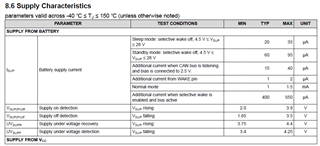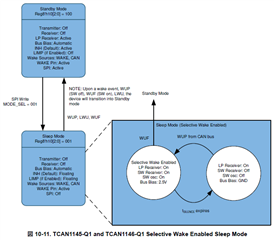Hi team,
Could you advise the sleep current at selevtive wake enabled?
"Additional current when selective wave is enabled and bus active" seems large.
I would like to know the current at the state described in the bottom right picture below.


regards,

